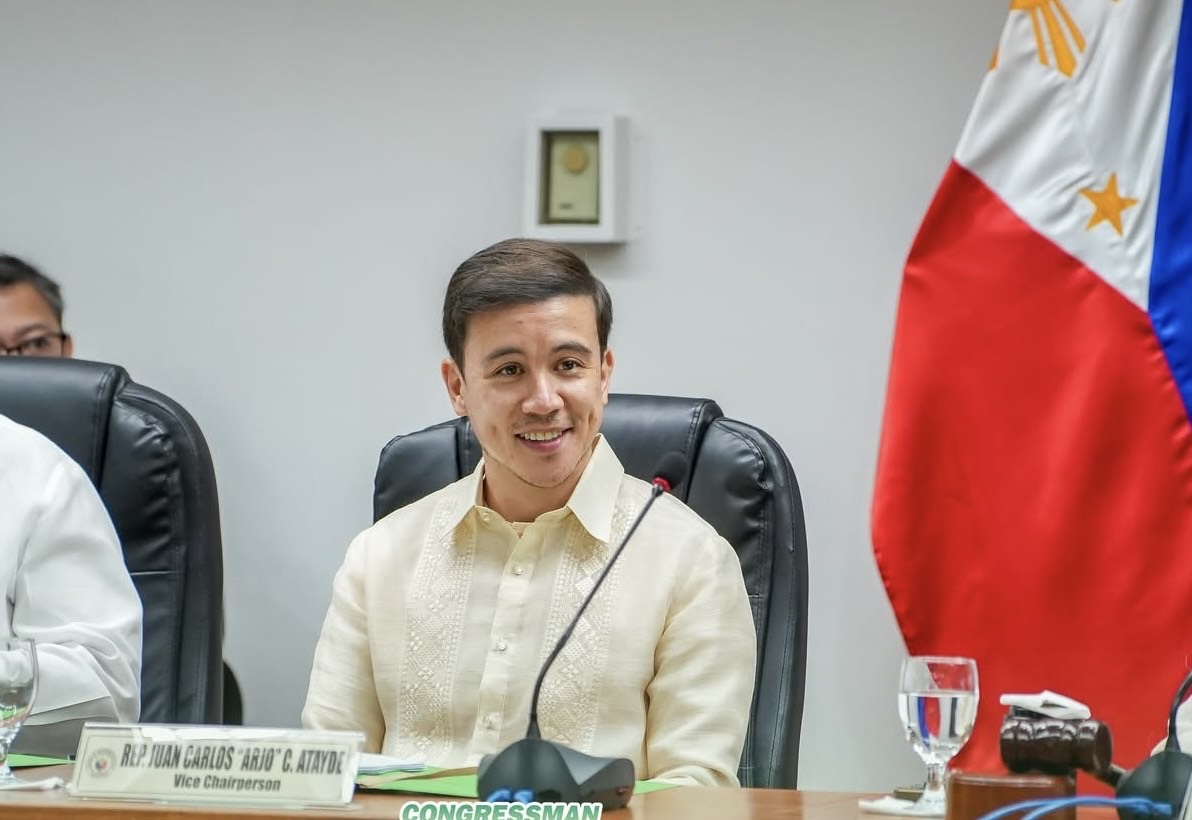NEWS
Infinit Care Spotlight Series: A closer look at worker profiles that need workplace mental health support

May 26, 2022 8:00 p.m.
Being on the internet has become a regular part of our everyday life. According to the latest statistics, 3.96 billion people use social media globally, with each person spending an average of 147 minutes or two hours and seven minutes on digital platforms every day.
These are significant figures if you look at them from the context of the level of exposure we get from the digital platforms we access.
Over the last few years, the internet has played a pivotal role in society–building businesses and new industries, creating new needs, and of course, shaping the mindset of the public as a whole. Without a doubt, the internet has become so powerful that it can shape generations and the way they think and act as a whole.
But have you ever wondered how information is sifted and checked in the online worlds we love to immerse ourselves in?
Websites and applications, big and small, have community guidelines that protect their users from being exposed to harmful information, but who exactly are the people working behind the scenes and doing the heavy lifting of screening this information?
In this article, we will talk about the sentinels of the internet and the plight that comes with their profession.
Meet the Content Moderators.
Content Moderation in a Nutshell
Content moderation, at its simplest, is the process of screening and monitoring user-generated content posted on online platforms.
Whenever a user submits or uploads something to a website, moderators go through the content to make sure that the material follows the community regulations and is not criminal or illegal in nature.
Some examples of banned content that content moderators screen are those that contain sexual themes, drugs, bigotry, homophobia, harassment, and racism.
While content moderation is applied to a majority of online platforms, they are even more so practiced in websites with a heavy lean toward user-generated uploads.
This includes social media platforms, online marketplaces, communities and forums, the sharing economy, and even dating sites.
There are two different types of content moderation that websites use: AI-automated and human moderation.
In the first type, a machine learning system is designed to moderate posts based on previous data gathered from the internet.
AI moderation is significantly faster–sometimes only taking seconds to review posts, but it might not always be 100 percent accurate because it relies on machine learning which may not always pick up the right cues.
Human moderation, on the other hand, is a manual type of process that involves an actual person who reviews the posts.
Under this category, the screener follows specific platform rules and guidelines to check the user-generated content submitted to the website. While this type of moderation is more foolproof than its counterpart, it also takes more time due to its manual nature.
Moreover, it also presents a serious problem within its workforce that unfortunately, is not often well addressed: mental distress.
The Dark Side of Content Moderation
While content moderation remains to be a discreet profession, at least in the Philippines, more and more people who have worked in the field have stepped up over the recent years to speak up about the challenges and dangers that are prevalent in the industry.
A riveting 2018 internationally produced documentary titled ‘The Cleaners’ gave an exhaustive look at the plight of moderators in the country who worked for online giants like Facebook, Twitter, and Google, and tackled the subject of their mental health struggles from their job.
Facebook itself has acknowledged the difficulties that come with the profession while Microsoft has faced lawsuits from former employees who claim that they were not given proper support despite the psychological dangers of their job.
Moderators sift through hundreds of submissions that contain triggering content not limited to depictions of death, torture, mutilation, and violence for hours, sometimes with only limited time for breaks.
The nature of the work can lead to the development of mental distress and psychological issues such as post-traumatic stress disorder (PTSD), anxiety, and even depression.
This is something that is also supported by data from other studies in journalism, law enforcement, and child protection which claim that repeated trauma exposure can lead to psychological distress.
On top of that, workers in the said areas have also been stated to suffer more from burnout, relationship challenges, and even suicide.
The following are other mental health problems that can arise from exposure to toxic content:
- Panic attacks – some moderators have expressed feeling attacks when being around animals and children–fearing something will happen to them–after repeated exposure to violent videos.
- Normalization/Desensitization to disturbing humor and language – repetitive exposure to disturbing content can change the mindsets and perspectives of its audience, leading to inappropriate humor and language.
- Self-destructive habits – alcoholism, use of drugs, and display of indiscriminate sexual habits have supposedly also been reported in the workplaces of moderators who presumedly engage in them as a way of emotional escape to their job.
- Skewed beliefs – in some cases, some content moderators can also develop fringe views (e.g. believing conspiracy theories) that are not supported by hard facts because of constant exposure to their materials.
The Cost of Internet Safety
Without a doubt, content moderators serve as the first layer of protection of the general public from disturbing and harmful materials.
Unfortunately, they are not always properly protected from the rigors that come with their profession.
Unlike different workplaces (for example, those in the health sector, law and policing, and journalism) which have more solid guidelines when it comes to taking care of the mental needs of their workforce, there is an obvious lack of the same system for those working in the content moderation industry.
In an article by Harvard, it is even said that companies are even very restrictive about letting others investigate their existing procedures and treatment of these workers.
Not only are there no third parties monitoring the welfare of employees, but people working in the industry are also commonly asked to refrain from talking about their work through non-disclosure contracts.
Fortunately, some companies have also taken the initiative to develop workplace guidelines that can improve the treatment of those in the industry.
Facebook, for example, helped create the Technology Coalition which then designed the Employee Resilience Guidebook, a guide that outlines rules protecting the occupational health and safety of workers reviewing distressing content.
While the guidelines were made for those who are focused on employees dealing with child pornography, it also has terms that can be used for others in professions that expose workers to distressing imagery and content.
Specifically, the guide includes rules such as the provision of mandatory individual and group counseling sessions with a certified trauma specialist, limiting exposure to disturbing content for four hours, giving employees the choice to opt out of viewing specific disturbing content, encouraging them to switch to other projects as a form of relief, and giving them enough time to take a break and recover from their work.
Protecting the Protectors
While overarching guidelines are already being developed on a global scale, it cannot be debated that a huge chunk of the responsibility should fall on the shoulders of the employers who are in a better position to observe and improve the best practices in this area.
Here at Infinit Care, for example, we follow a tried and tested framework, the Mental Health Continuum, to make sure that every employee working in high-risk professions gets the mental health support that they need, wherever they are on the scale – whether they are excelling, surviving or in crises. (Click here to know more about the Mental Health Continuum.)
Our Head of Clinical Care Shyne Mangulabnan suggests several ways on how employers can put this to work.
“Having a counseling professional who can help these employees is essential as well as having a solid support and assessment system for them. For example, surveys given to agents which can be used as a reference for the design of a wellness strategy is a good place to start. Constant monitoring of employees should also be done to make sure that their needs are met.”
On top of that, Mangulabnan also suggests creating proper escalation procedures for concerns relating to the mental health challenges of content moderators.
Proper education of important stakeholders within the company (human resource team, upper management) about mental health risks of the job is also necessary since they are the decision-makers who create systems that take care of employees.
“It would be best to have an end-to-end solution: an onboarding process that gives candidates the training and education they need to understand the risks and concepts of well-being, round-the-clock onsite and virtual counseling services, community support groups, yoga and meditation activities, and workshops are just some of the many things that employers can initiate to make sure that they give the support that their workforce needs.”
True enough, it is the responsibility of employers to make sure that they ‘protect the protectors’ of the internet.
However, it’s not only the content moderators who should be given this kind of support, especially with 43 percent of the global workforce expressing that the COVID-19 pandemic has increased the stress that they suffer from work.
This story is just the first chapter of a series that will shed light on all the professions who need mental health support most in these trying times.
Do you need help on how you can start caring for your employees in this aspect? We’d be more than happy to guide you here at Infinit Care. We are a company that helps other companies provide comprehensive mental health care support to their employees through the use of science-backed methodologies. You can reach out to us here to know more about how we can help.
NEWS
Rep. Atayde: No ghost projects in QC’s first district

3:30 p.m. October 27, 2025
Quezon City First District Representative Juan Carlos “Arjo” Atayde reiterated that there are no “ghost projects” in his district, following a personal inspection of seven flood control and drainage projects in his district.
“There are no ghost projects with us. There’s no ghost in District One. There’s no basis for claims that these exists. Maybe there’s just a need for proper coordination so information about the projects is accurate,” Atayde said after visiting sites in Barangay Bahay Toro, Del Monte, Project 6, and San Antonio.
Atayde’s visit confirmed findings from the Department of Public Works and Highways (DPWH) Quezon City 1st District Engineering Office, which stated in a September 19 letter that “all projects are verifiable on site,” referring to the seven projects questioned due to alleged lack of coordinates.
According to the DPWH, out of 66 alleged ghost projects reported in the media, only seven were located in Atayde’s district, where all of them were found to be completed or ongoing, with proper documentation, correct coordinates, and photographic evidence.
Verified projects included four flood control structures along Culiat Creek and Dario Creek in Barangay Bahay Toro, rehabilitation of Drainage Road 3 in Project 6, the West Riverside Pumping Station in Barangay Del Monte, and a flood control structure along San Francisco River in Barangay San Antonio.
Atayde said five of the seven projects were completed, while two were suspended due to pending issues.
He also visited two additional flood control projects to assess their status – one completed along Dario Creek and one suspended along Mariblo Creek.
Atayde assured to his constituents that public funds were used properly and allegations of ghost projects are “baseless”.
“The projects are not ghosts – they can be seen, touched, and are beneficial. It looks like Halloween came early for some people,” Atayde said.
He also called on those who accused him of benefiting from these projects to verify their information first.
Atayde emphasized he couldn’t benefit from these DPWH projects as they’re already in the National Expenditure Program (NEP), and he couldn’t unilaterally include them in the General Appropriations Act (GAA) as he’s not a member of the bicameral conference committee.
“We all want to end corruption and jail the corrupt, but we won’t succeed if we punish the wrong people,” the lawmaker said.
He further reiterated the DPWH’s assertion that there are no ghost projects in Atayde’s district.
“The evidence speaks for itself, and the evidence speaks the truth,” Atayde said.
NEWS
COA uncovers more fraud in Bulacan flood control projects, files new reports with ICI

6:30 p.m. October 26, 2025
The Commission on Audit (COA) has submitted four additional Fraud Audit Reports to the Independent Commission for Infrastructure (ICI), exposing further irregularities in flood control projects managed by the Department of Public Works and Highways (DPWH) – Bulacan 1st District Engineering Office.
These reports detail cases of mismatched sites, ghost projects, and the use of substandard materials, leading to significant public funds being misspent.
SYMS Construction Trading
Balagtas River Project (P46.35 million): Despite full payment, no real construction was found at the approved site. DPWH representatives directed COA to a different location where a structure made of unsuitable materials and exposed steel bars was observed. DPWH’s own records showed 0.00% completion.
Maycapiz-Taliptip River Project (P92.59 million): This project was reported as 100% accomplished and fully paid, yet COA found no flood control structure during inspection, labeling it a “ghost project.”
L.R. Tiqui Builders, Inc. and M3 Konstract Corporation (Joint Venture)
Barangay Piel, Baliuag Project (P96.50 million): Satellite imagery revealed an existing flood control structure at the approved site even before the contract began. DPWH pointed COA to an incorrect site, where an existing structure failed to meet project specifications.
DARCY & ANNA BUILDERS & TRADING
Barangay Carillo, Hagonoy Project (P74.11 million): Despite a supposed completion date of October 3, 2024, satellite images and COA’s inspection confirmed no structure was built at the approved site.
In all cases, DPWH-Bulacan 1st DEO failed to provide crucial supporting documents to COA, hindering validation of the projects.
Individuals Held Liable
Several individuals from DPWH-Bulacan 1st DEO have been identified as liable, including District Engineer Henry C. Alcantara, Assistant District Engineer Brice Ericson D. Hernandez, and Planning and Design Section Chief Ernesto C. Galang, along with various project engineers and company representatives from the involved contractors.
Those implicated may face charges under the Anti-Graft and Corrupt Practices Act, Revised Penal Code for malversation and falsification of documents, and violations of COA Circular No. 2009-001 and the Government Procurement Reform Act.
These audit findings will support the ICI’s ongoing investigation into government infrastructure project irregularities. COA Chairperson Cordoba’s directive on August 12, 2025, initiated an immediate audit of all DPWH flood control projects in Bulacan from July 1, 2022, to May 30, 2025. This new batch of reports contributes to the 25 Fraud Audit Reports already submitted to oversight bodies, reinforcing COA’s commitment to transparency and protecting public funds, in line with President Ferdinand Marcos Jr.’s call for accountability. Additional reports are expected as the audit continues.
NEWS
DITO delivers superior network performance, turning digital aspirations into possibilities

8:11 p.m. August 28, 2025
DITO Telecommunity showcased how superior connectivity transforms Filipino digital aspirations into achievable realities during the successful media launch of the telco’s latest campaign, Kaya DITO, held at Manila House, Bonifacio Global City, Taguig.
Built on True 5G standalone technology and as validated by a global leader in mobile analytics and insights, Opensignal, as the Philippines’ Fastest Mobile Network, DITO’s ecosystem proves that the Filipino telecommunity’s demand for seamless network connectivity, value-driven services and unified digital experience aren’t distant possibilities, but today’s basic expectations—this challenges what the telco industry has long normalized.
“For too long, outages, dropped calls, and overpriced data have been treated as normal. Let us say it bluntly: It is not normal. Every Filipino has limitless potential when equipped with the right tools, and the game is now changing since DITO has joined the fray and taken up the cause to disrupt the status quo—to deliver inclusive, next-gen technology to the Filipino people. “Kaya DITO!” is our battle cry to symbolically break that cycle, because we truly believe that Filipinos deserve better,” shared by DITO Telecommunity President Eric Alberto in the event.
The Telco that Truly Takes Care of its Users
DITO’s prepaid solutions eliminate the frustration of wasted data through Level-Up Packs with ViLTE technology, making DITO the primary telco offering unlimited DITO-to-DITO HD video calls and unli mobile calls. Combined with Viber and Prime Video inclusions and flexible data packages with longer validity periods, users can now maximize their every peso without worrying about abruptly expiring data allocations.
The Telco that Offers Value-Packed Postpaid Plans
DITOFlexPlan 888 redefines what postpaid should offer—comprehensive inclusions and generous data at prices that make sense for Filipino budgets. Whether you choose SIM-only or device bundles, these plans prove that premium network performance doesn’t have to break the bank, empowering users to pursue their goals without connectivity compromises.
The Telco that Brings True 5G Home Internet Convenience
DITO WoWFi Pro 365 makes home connectivity effortless with a year-long unlimited connection that works when you need it. Families enjoy the convenience of reliable internet for work, study, and entertainment without the inconvenience of data top-ups and complicated installations; just network performance that simplifies your digital life at home. Just ask any of your relatives and friends who have already ditched ordinary WiFi and jumped onto WoWFi— they will tell you what you’ve been missing out on.
The Telco that Built Everything You Need in One App
The DITO App represents one of the industry’s most comprehensive digital platforms, built from the ground up to handle the entire customer journey. From SIM and load purchase to account management and a wide range of OTT apps, users enjoy complete digital control with custom special offers, DITO Rewards points, and 24/7 customer support—managing everything while earning exclusive benefits.

















